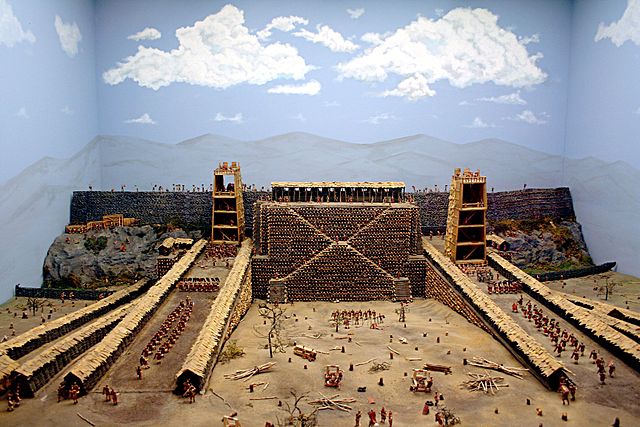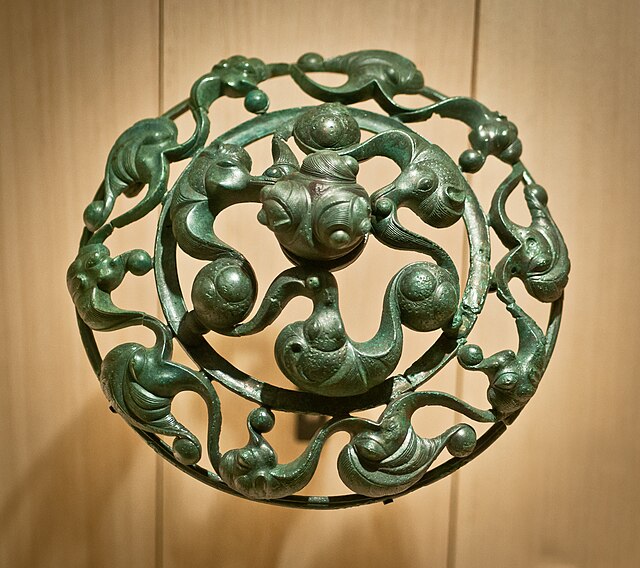The La Tène culture was a European Iron Age culture. It developed and flourished during the late Iron Age, succeeding the early Iron Age Hallstatt culture without any definite cultural break, under considerable Mediterranean influence from the Greeks in pre-Roman Gaul, the Etruscans, and the Golasecca culture, but whose artistic style nevertheless did not depend on those Mediterranean influences.
Agris Helmet, France
Swords and helmets from Hallein, Austria
Reconstruction of the siege of Avaricum, France, 52 BC
Bronze chariot fitting from Roissy, France
In Europe, the Iron Age is the last stage of the prehistoric period and the first of the protohistoric periods, which initially meant descriptions of a particular area by Greek and Roman writers. For much of Europe, the period came to an abrupt end after conquest by the Romans, though ironworking remained the dominant technology until recent times. Elsewhere, the period lasted until the early centuries AD, and either Christianization or a new conquest in the Migration Period.
Iron working was introduced to Europe in the late 11th century BC, probably from the Caucasus, and slowly spread northwards and westwards over the succeeding 500 years. For example, the Iron Age of Prehistoric Ireland begins around 500 BC, when the Greek Iron Age had already ended, and finishes around 400 AD. The use of iron and iron-working technology became widespread concurrently in Europe and Asia.
Villanovan Tomb from the 9th century BC. Museo Guarnacci, Volterra.
Villanovan double urn.
Bronze Harness Trapping in the Shape of a Horse; Villanovan, 9th–8th century BC. LACMA.
Negau type helmet from the Golasecca III period (480/450 BC).







